Daniel Hennelly
Wish You Were Here..
Not Really!
Postcards have long aided civic boosterism. Postcards of churches, high schools, colleges, hospitals, and courthouses proudly show off the jewels of a city or small town. Scenic attractions like lakes, beaches, and mountains are also popular postcard subjects. Hotels and restaurants gave away free postcards to have tourists aid their promotional efforts. An odd postcard subject are prisons.
Prison postcards don’t appear to have been designed for an inmate to write to friends and family to point out their new abode. Of the prison postcards in my collection, the few that were mailed were mundane messages about enjoyable trips. None seem to be “change of address” notices.
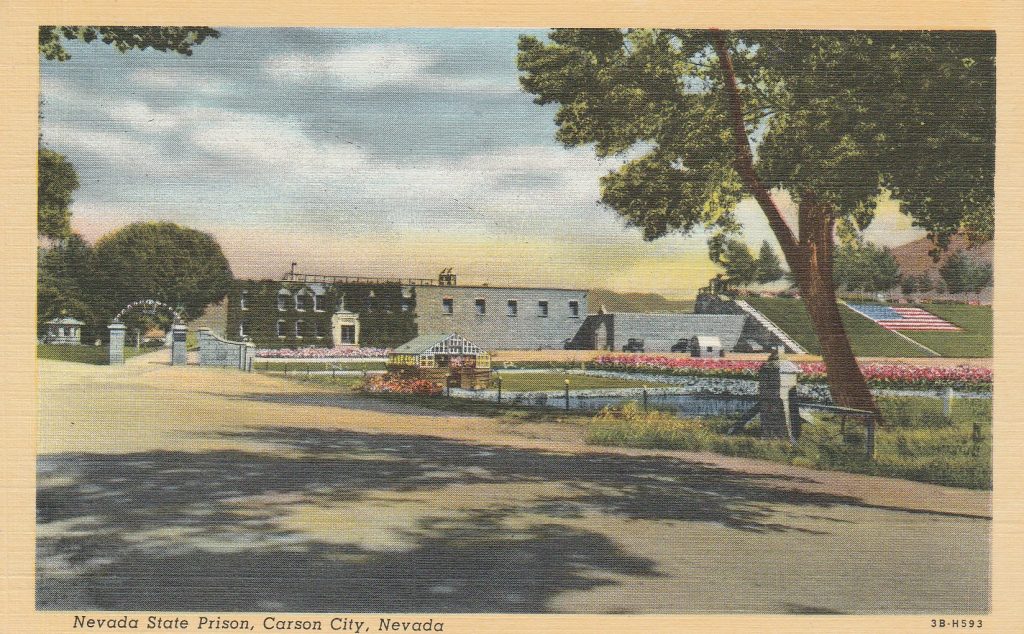
This linen postcard shows the Nevada State Penitentiary in Carson City. The caption on the back states proudly, “The smallest State Prison in the United States and famous as the first penal institution in the world to adopt the lethal gas method of humane execution.” The reason why Nevada’s prison was so small, was not a lack of crime. In 1940, Nevada’s population was only 110,000.
The Nevada State Penitentiary was established in 1862 and the building in the postcard closed in 2012. From the 1930s until 1967, the prison operated a casino for the inmates called the Bullpen. A new warden arrived and decided that the inmates needed to engage in more wholesome activities like ping pong, volleyball, and painting.
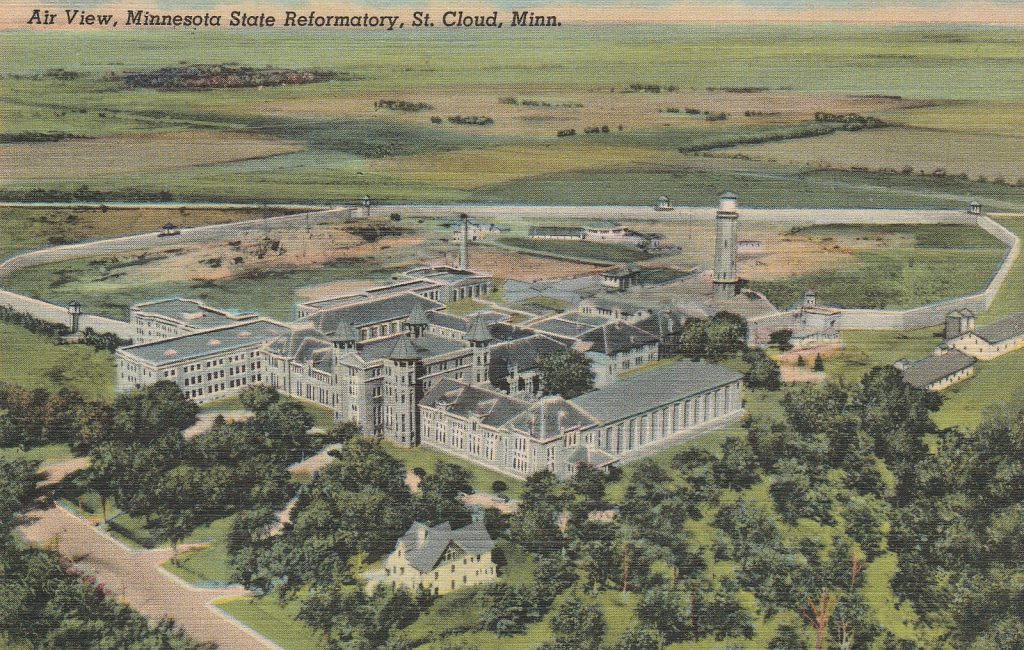
Reformatory is a word rarely used today to describe a prison. It implies that the purpose of incarceration is to reform an inmate into a law-abiding citizen. The C.T. (5B-H254) linen postcard from 1945 shows an arial view of the sprawling Minnesota State Reformatory, “Saint Cloud, Minnesota, is a 55-acre tract enclosed by a granite wall which is the largest prison wall in the world and is only surpassed by the Great Wall of China. The wall 22 feet overground, is four feet thick, and ten feet underground. It has seven lookout towers along the wall. The wall and other buildings were built by prison labor and the stone was taken from the quarry in the background of the picture. It was all built by hand and took 50 years to complete the job.”
Established in 1877, the Minnesota State Reformatory at the time the postcard was published, held inmates between age 24 to 30. In addition to working in the quarry, inmates operated a farm and factories for manufacturing clothing and shoes.
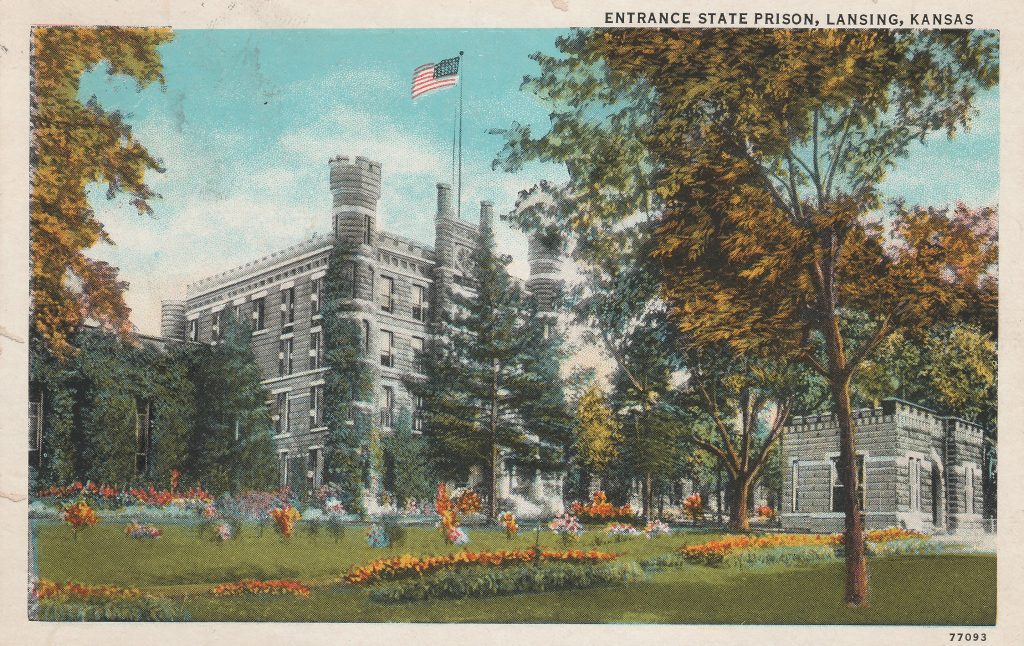
Kansas State Prison in Lansing (outside Leavenworth, Kansas) looks like a Gothic castle. (Leavenworth is also home to a federal penitentiary and the Army’s Disciplinary Barracks.) The original section of the prison was built by inmate labor in 1867 and has been expanded over the years. Richard Hickock and Perry Smith, who murdered four members of the Herbert Clutter family in Holcomb, Kansas in 1959, were hung at Lansing in 1965. Their horrific crime shocked 1950s America and was recounted in Truman Capote’s book, In Cold Blood.
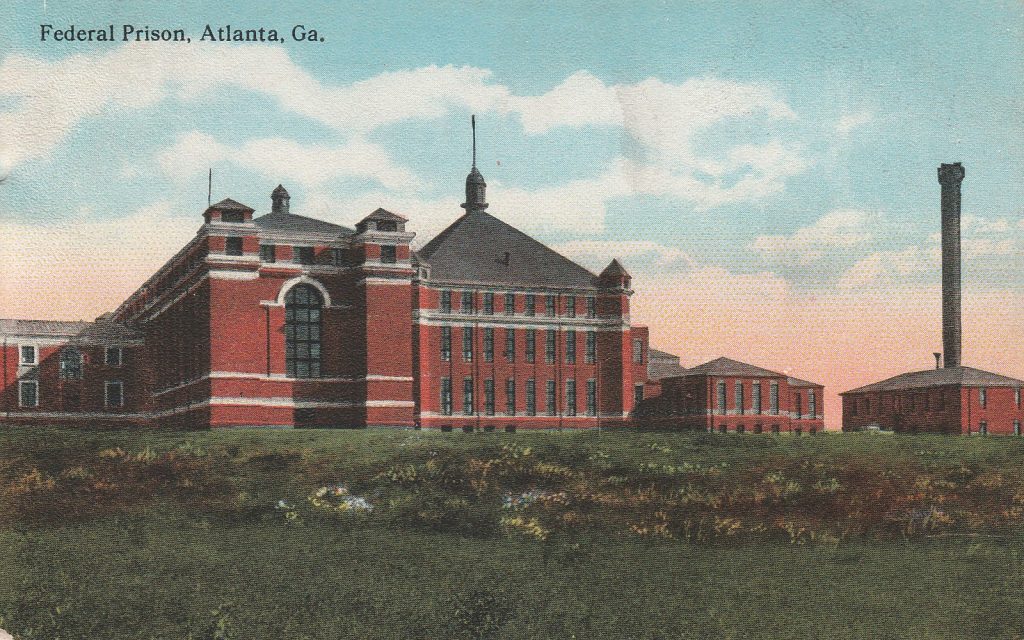
The Federal Penitentiary in Atlanta, Georgia, opened in 1902; this card mailed in 1916, shows the prison shortly after its completion. It was once the largest federal prison, with a 3,000-inmate capacity, some of whom were Al Capone, Mickey Cohen, Jimmy Burke (Goodfellas), Whitey Bulger, and Carlo Ponzi.
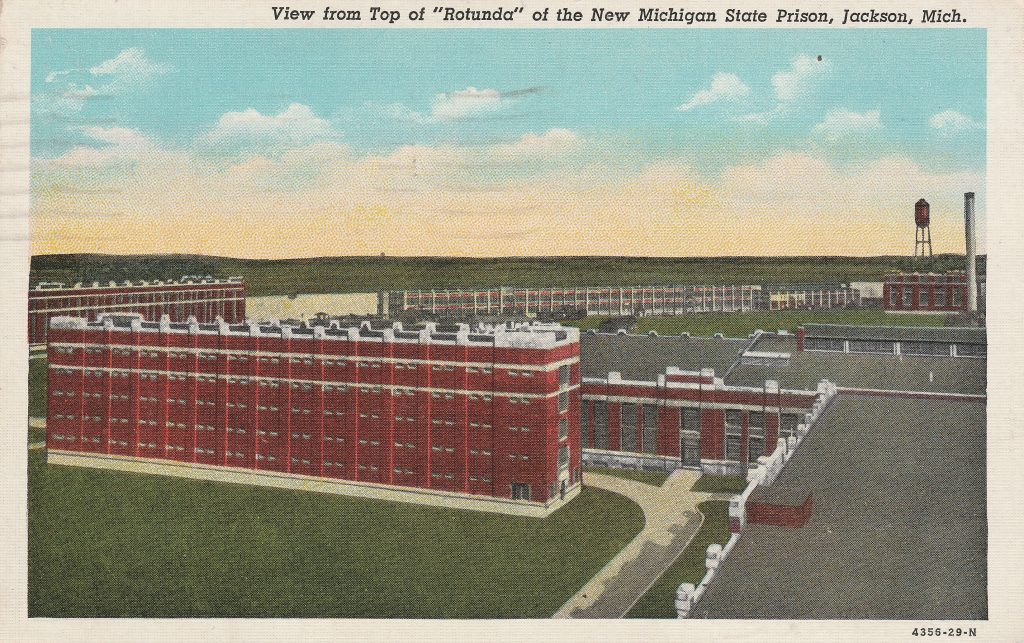
The Michigan State Prison in Jackson (AKA: Jackson State Prison) was once the largest walled prison in the world, with a 6,000-inmate capacity. The first prison in Jackson was built in 1839. The structure seen here opened in 1926. The new prison enclosed 57 acres and was surrounded by a 34-foot high concrete wall.
Jackson’s most famous inmate was former major league baseball player, Ron LeFlore. During his major league career, LeFlore stole 456 bases. LeFlore was playing for the prison’s baseball team when he received a tryout with the Detroit Tigers. He played six seasons for the Tigers and later played for the Expos and White Sox.
In 1975, an inmate escaped from Jackson when a friend chartered a helicopter and forced the pilot at knifepoint to land in the prison yard. The helicopter then flew six miles to two waiting getaway cars. Despite being sprayed with mace, the pilot was able to get airborne and follow one of the cars, radioing its position to police who quickly surrounded it. The escapee turned himself in a few days later.
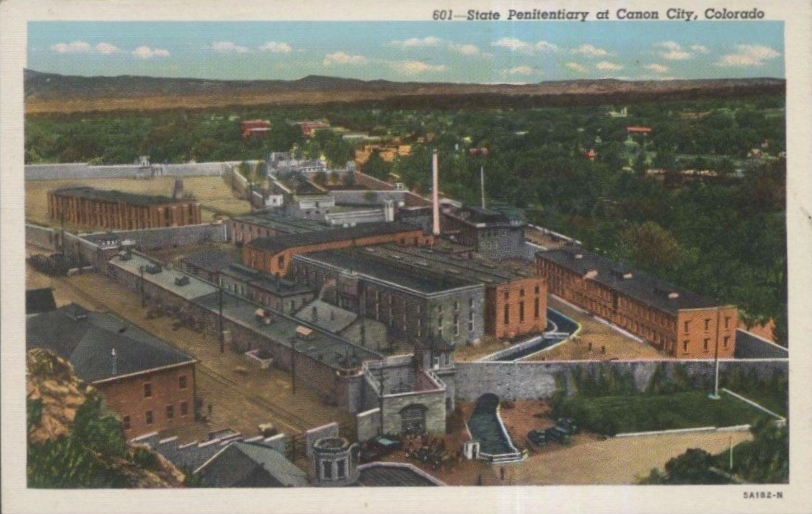
The Colorado State Penitentiary in Canon City was constructed in 1879 at the base of the Skyline Drive. The description on the cards tells that, “following the terrible riot some years ago, the establishment was partially rebuilt and enlarged.” It refers to the October 1929 riot that resulted in thirteen deaths including eight prison guards.
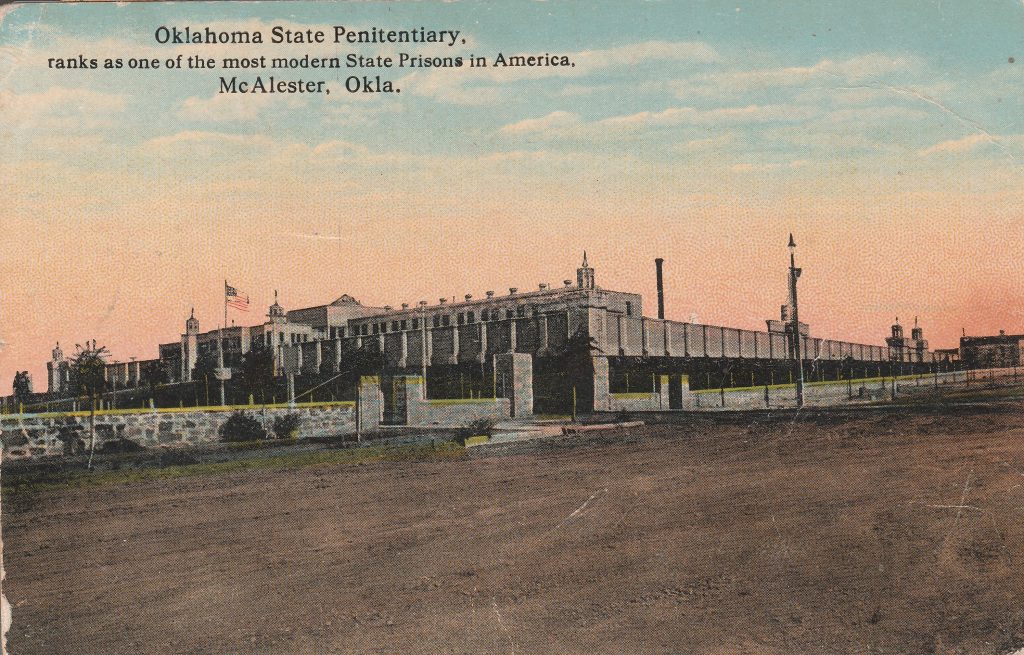
The Oklahoma State Penitentiary in McAlester opened in a temporary facility in 1908 shortly after Oklahoma became a state. Construction began on a more secure structure as seem on this card mailed in 1915. The caption proclaimed it “one of the most modern State Prisons in America.” Starting in 1940, the Oklahoma State Penitentiary annually hosted a popular prison rodeo. Female inmates competed for the first time in 2006. The rodeo was discontinued in 2009 due to a state budget shortfall.
The only penitentiary I’ve been inside was the former Virginia State Penitentiary located in downtown Richmond (demolished in 1991). When built, it was located in an agrarian area. The original building was designed and opened in 1804 by Benjamin Latrobe who later designed the U.S. Capitol. Latrobe’s building was torn down in 1928. An office building now occupies the site of the former penitentiary.
* * *
In the summer of 1979, I accepted a position with the Virginia Employment Commission and was assigned to provide job placement services for two prison work release programs that the Department of Corrections operated in Richmond. One program was for twenty-five female inmates who were housed in the former warden’s home (built in 1818) on the corner of Spring and Belvedere Streets, right across from the penitentiary and one of my offices was located there. (The penitentiary’s entrance was on Spring Street, earning it the sobriquet, the Spring Street Hotel.)
The other program was for eighty male inmates who were housed in a minimum-security prison camp in rural Chesterfield County. (There was no fence around the facility.) The inmates had a basketball team and played games against other prisons in the Richmond area. One Friday night, their opponent was the penitentiary’s team. My invitation to attend the game came from the camp’s recreation specialist. The game was played at the penitentiary since its team was composed of maximum-security inmates. We went through several gates and security checkpoints before arriving at the gym. There were no spectators other than a few guards. I don’t recall the exact score except our team was trounced.
* * *
In December 1979, a convicted murderer serving a life sentence attempted an escape from the penitentiary by sailing over the twenty-five-foot-high wall using a hang glider he assembled. He landed in the razor wire atop the wall. If he made it over the wall, he would likely have been hit by the traffic on busy Belvedere Street.
Such an interesting subject to collect! Enjoyed the article and fun facts. Thanks
What a lot of info, and particularly that he worked in prisons and some of the entertainments. Wnat about the Casino ! That might not serve to rehabilitate anyone it seems to me. I once know someone in prison. He was allowed to make and sell greeting cards. Interesting, but I think the farming would be better for rehab and health.
I used to trade postcards by mail with a woman who commented once that I seemed to have a fascination with jails, since I had sent her several cards which featured correctional facilities.
I’m confused. Minnesota State Reformatory, “Saint Cloud, Minnesota is enclosed by a granite wall which is the largest prison wall in the world and is only surpassed by the Great Wall of China. The wall 22 feet overground. The Michigan State Prison was surrounded by a 34-foot high concrete wall. So, the Minnesota wall is surpassed by the Michigan Prison. ?????
I based my article on various sources. The information on the Minnesota State Reformatory came from the back of the postcard. I thought the folks in Minnesota were engaged in a bit of civic puffery comparing the reformatory’s walls to the Great Wall of China.The walls in Michigan are obviously higher, I doubt the wardens of the two prisons ever exchanged postcards.